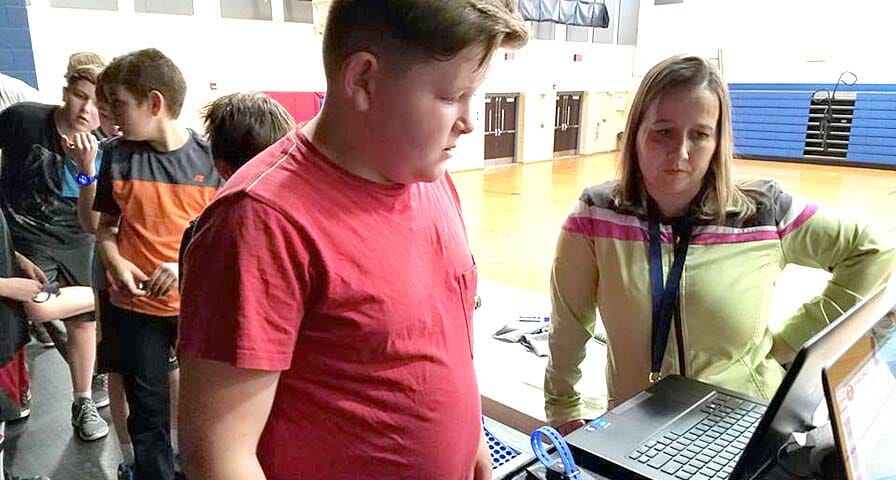Teachers can reinforce the health benefits of a full class period’s worth of heart rate training by providing students with a detailed workout summary before they leave for their next class.
Utilizing IHT’s Spirit System, students wear heart rate monitors and try to keep their heart rate in the target heart rate zone for the bulk of class. Teachers gauge student progress on their ability to spend as many minutes as possible exercising in the target zone. The target heart rate zone is 60-80 percent of a student’s maximum heart rate (MHR).
If each class workout serves as a test, students don’t have to wait to see their scores. Immediately following each class session, students – along with teachers and parents – receive an email recapping their performance in class, including how many minutes students spent exercising in the target zone and a graph showing the student’s heart rate throughout.
“You can do all those things and get all of that data from the automatic email you receive after your session,” said Australian physical educator Shane Stubbs, who’s integrated the Spirit System into his programs.
The quick distribution of information, along with the opportunity to reinforce a student’s understanding of the lesson, its goals and long-term benefits, sets IHT’s platform apart from others in use by schools.
Students can see both their heart rate number and the zone – the target zone shows as the IHT Zone wrist heart rate monitor lights up yellow – throughout class. The heart rate zones displayed on Zone monitor include:
- Blue: Resting heart rate, less than 60 percent of MHR
- Yellow: Moderate-to-vigorous heart rate, between 60-80 percent of MHR
- Red: Vigorous heart rate, between 80-90 percent of MHR
Upon returning their Zone monitors to the teacher, students get two pieces of immediate feedback. They get an immediate confirmation of the number of minutes they spent in the target heart rate zone on the teacher’s computer followed by a detailed summary delivered to their email address.
While many students have, and often wear, their own personal fitness devices to school, none proactively provide the summary feedback, Stubbs said. The device wearer must actively seek out any summary information, and – at least in Stubbs’ experience – few follow through.
“I see students all day who have their own [heart rate] monitor,” he said. “I say ‘hands up if you’ve ever looked at the dashboard on the app or on that website?’ Then I ask, ‘how many of you know what it means?’ None of them do.”
In addition to teaching students about their actual heart rate and the zone, teachers can follow through with guidance that will help students develop intrinsic knowledge that will benefit them when they aren’t exercising with a monitor.
“Kids today don’t know what it’s like to [work out] between 80 and 90 percent [of your target heart rate],” he said. “No one has ever taught them. But we’re teaching them.”
IHT’s philosophy mirrors that of the U.S. Centers for Disease Control. Students should receive 60 minutes of physical activity daily. Through its heart rate monitors and assessment software, IHT empowers teachers to use data to reinforce the benefits of each day’s activity with each student.


